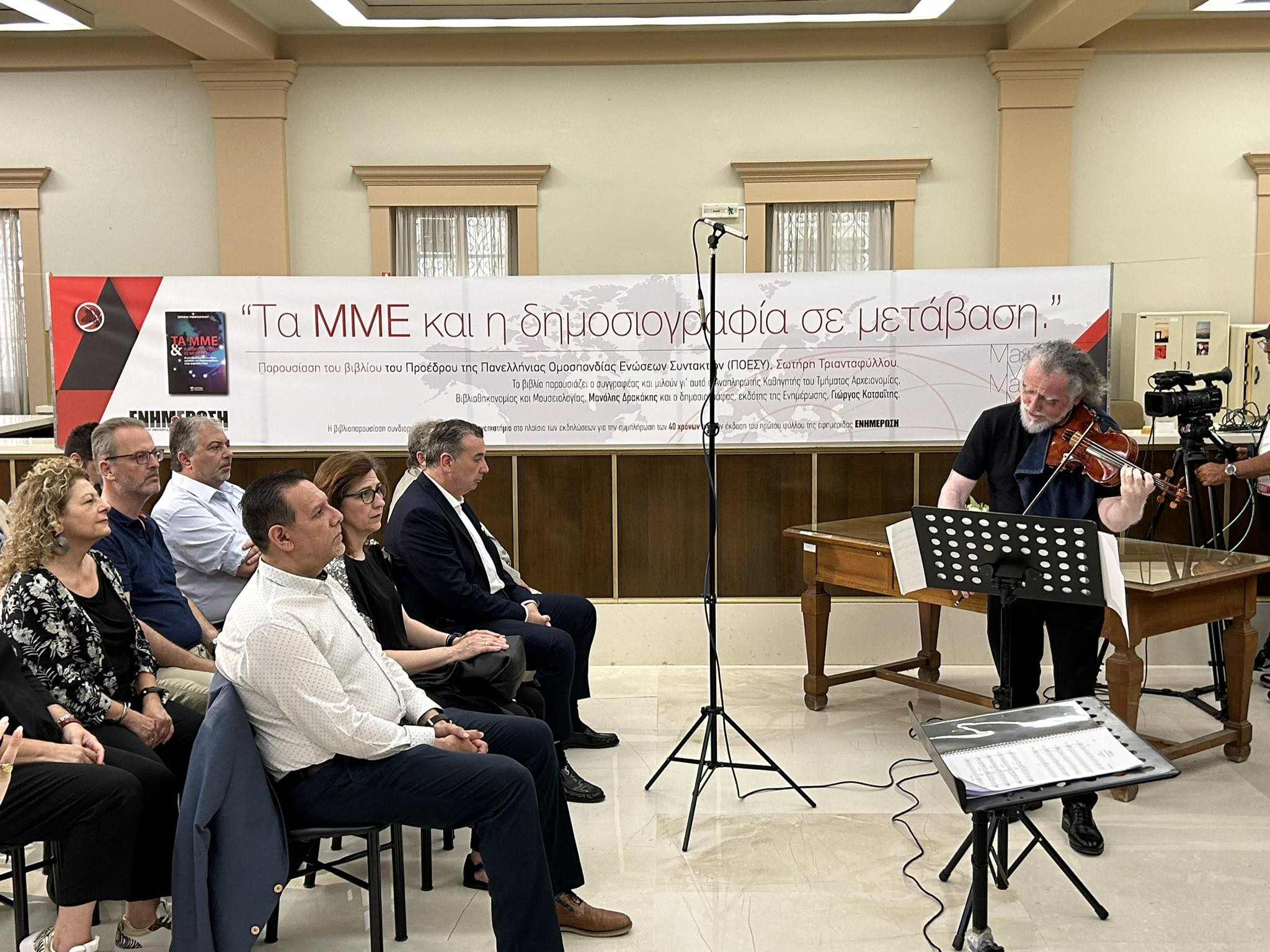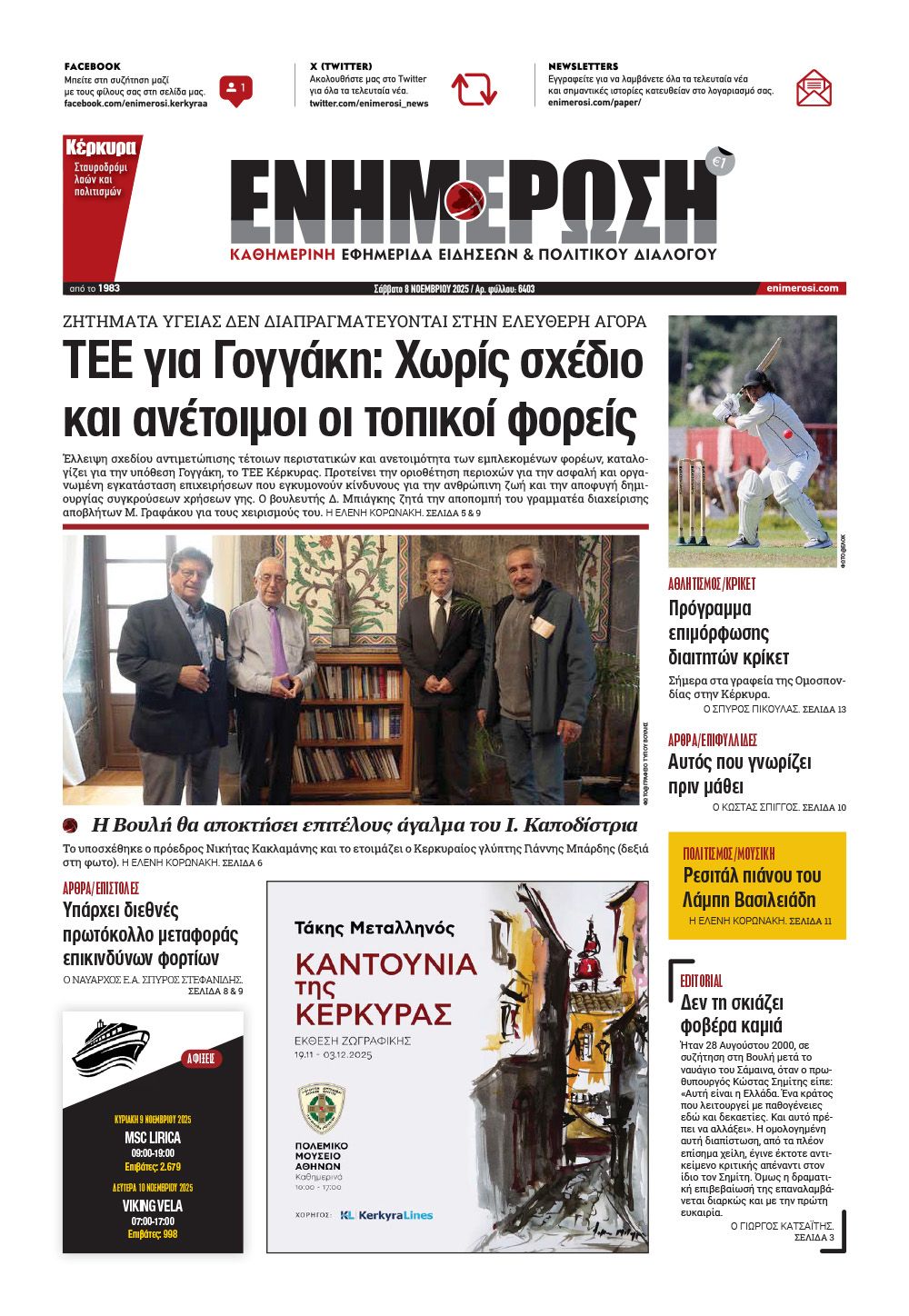Transfer of former Bank of Greece building to University completed
 Από την ανακοίνωση της ολοκλήρωσης της μεταβίβασης του κτηρίου άλλοτε της ΤτΕ στο Ιόνιο πανεπιστήμιο. Πρύτανης Ιονίου Πανεπιστημίου, Ανδρέας Φλώρος, υποδιοικητής της ΤτΕ, Θεόδωρος Πελαγίδης, δήμαρχος κεντρικού Δήμου, Στέφανος Πουλημένος.
Από την ανακοίνωση της ολοκλήρωσης της μεταβίβασης του κτηρίου άλλοτε της ΤτΕ στο Ιόνιο πανεπιστήμιο. Πρύτανης Ιονίου Πανεπιστημίου, Ανδρέας Φλώρος, υποδιοικητής της ΤτΕ, Θεόδωρος Πελαγίδης, δήμαρχος κεντρικού Δήμου, Στέφανος Πουλημένος.
CORFU. The final signing for the transfer of the Bank of Greece building to the Ionian University took place on Monday afternoon. The Department of Tourism will now be housed there.
The final signing for the transfer of the Bank of Greece building to the Ionian University took place on Monday afternoon. The Deputy Governor of the Bank of Greece, Th. Pelagidis, was present, as was the Central Corfu mayor, Stefanos Poulimenos. The dean announced that the work to house the Department of Tourism there will begin as soon as possible, while the mayor gave assurances that the municipality would give its support in efforts to resolve the building issues, including housing for university staff and students.
The purchase by the academic institution was agreed upon by the two entities following a proposal submitted by the University and approved by the General Council of the Bank. The agreed purchase price is 2,400,000 euros, which will be covered by resources from the Ministry of Education National Development Programme. The building consists of a basement, ground floor, and first floor, on a plot of land with an area of 1,554.45 square metres.

From the University's event with Enimerosi on the ground floor of the building last year, on the occasion of the newspaper's 40th anniversary. The professor and violinist Spyros Gikontis performed with the university's string ensemble.
During the British rule (1814), the building served as the seat of the Ionian Senate until 1824, and the "Latin Archbishop's Mansion" housed the town's courts (Court of Appeals, District Court, Magistrate's Court) with the inscription "Palace of Justice" on its facade. The rear part of the building was converted into holding cells for defendants, which remained until the building's collapse in 1943 during World War II. In 1967, following a competition, the war-ravaged building was purchased by the Bank of Greece, which restored it to its original form and housed the services of its branch there for many years.
GIORGOS KATSAITIS












